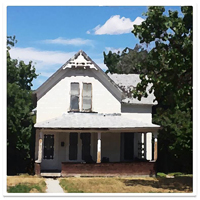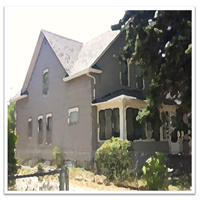Great Falls
1886 saw the arrival of Great Falls’ first and perhaps most influential black resident in Ed Simms. He came to the North Central Montana town in the same manner that many black men and women would eventually come to the Montana Territory. Great Falls and relatively nearby Fort Benton was the end of the line for river boats departing from St. Louis and Kansas, where the largest population of freed African Americans had migrated following the culmination of the Civil War. Because of the connection, Central Montana was viewed by many ethnic groups as an extension of Missouri and Kansas. Soon, with the completion of the railroad through Great Falls, new jobs and easier transportation facilitated the growth of the city’s black community from 1886 to the 20th century. By the 1930s, Great Falls would boast the highest percentage of black residents of any Montana city.
Early social development in Great Falls is characterized by a tangible sense of cohesion in the black community. Zoning ordinances and Jim Crow style policies forced black residents into the Southside neighborhood. This physical proximity engendered a close knit community that shared in many different aspects of social and civic life. At the center of black social life in Great Falls was the Union Bethel African Methodist Episcopal Church standing on Fifth Avenue, in the heart of the black neighborhood. The AME church was the epicenter of religious services, political meetings, women’s and fraternal clubs, and many joyous social gatherings. Such activities allowed the black community to exercise their rights as citizens and foster greater civic participation from its members. Participation in this field was badly needed. Racism and prejudice in Great Falls took a heavy toll on black men and women trying their best to get by. Many found themselves unwelcome in restaurants and bars, as well as unions, clubs and other establishments. Responding to this racism, in part, led to Great Falls harboring one of the most vibrant black communities in the state. It became home to a black baseball team, several black bands, many businesses, and even a jazz room called the Ozark Club.
In spite of the persistent racism, Great Falls did experience a period of marginal social and political progressivism in the 1890s. While the town was still quite young, and the black population growing, African Americans made significant inroads in local politics. Both the Republicans and the Democrats nominated black men for public positions, and in 1892, the Republicans elected William Morgan as the new constable, possibly the first black man elected to office in Montana (William C. Irvin was also elected to constable in Helena sometime in the late 1880s to early 1890s, but the exact date is unclear. Historian Quintard Taylor puts the date as early 1888). The pendulum swung the other way following the 1890s, and renewed racist policies were passed throughout Montana in the first decade of the 20th Century, culminating in the 1909 anti-miscegenation laws.
Nevertheless, the black community in Great Falls continued to strengthen and center itself around its landmark families and institutions. Even as its population began to dwindle due to economic hardships in the 20s and 30s, black clubs, particularly its women’s clubs, made substantial social advances for the betterment of black men, women, and students. Later in the century, as the presence of the Air Force base nearby continued to infuse the black community with new members, women’s clubs in the city fought tirelessly for fair treatment of black airmen in businesses and institutions in Great Falls. Today, Great Falls still is home to the largest black community in the state, though it is but a fraction of former size.
Great Falls Historic Properties

David and Katie Knott Residence
711 8th Avenue South

Taylor-Reed House
708 8th Avenue South
